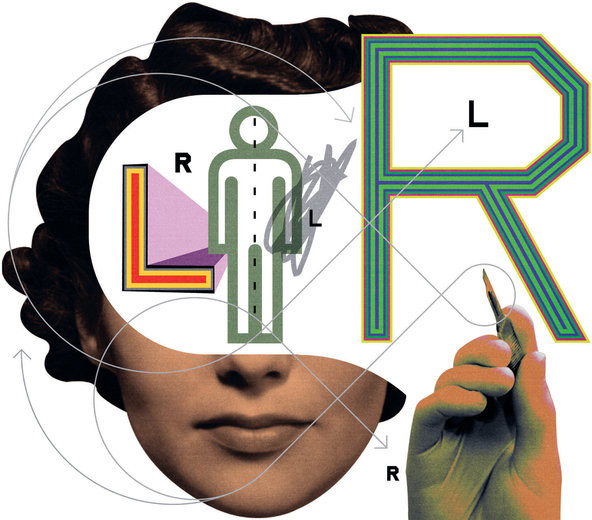Visiting a doctor for a checkup is usually a routine experience. You expect your healthcare provider to be meticulous and precise, paying attention to every detail of your health. But what happens when a seemingly simple directional confusion, like mixing up left and right, occurs within the medical environment? It might sound like a minor issue, yet, as one physician experienced firsthand, this type of disorientation can lead to significant medical errors and highlight critical aspects of patient safety.
 X-ray technician preparing for a scan
X-ray technician preparing for a scan
A Case of Mistaken Ankles
Imagine a scenario in radiology: a patient with a swollen ankle is ready for an X-ray. However, confusion arises when the technician begins preparing to image the uninjured foot. Despite the patient pointing out the error, the technician insists on following the doctor’s orders. The result? X-rays of the wrong ankle are taken, deemed “normal,” and reported back to the physician – who, in this story, was me.
The patient, understandably, was not pleased. After recounting the mishap, he sought care elsewhere. While I was mortified, I wasn’t entirely surprised. As someone with profound left-right confusion – affecting approximately 15% of people – I had always worried about such a mistake. For individuals like myself, distinguishing left from right isn’t automatic. When faced with a patient’s needs, extra mental effort is required to ensure accuracy.
Living with Left-Right Disorientation in Medicine
Fortunately, my medical specialty doesn’t involve surgical tools. My errors typically remain on paper, in notes that occasionally lack precision. But the X-ray incident served as a stark reminder of the potential for harm. Since then, meticulous double-checking has become a habit, preventing, to my knowledge, any recurrence of such errors.
However, the thought of performing surgery with this condition is unsettling. The anxiety would be constant, and rightfully shared by those around me.
The Shadow of Wrong-Site Surgery
Wrong-side surgery, or operating on the incorrect side of the body, has been a persistent problem in medicine, likely since anesthesia lessened patient involvement in procedures. This falls under a broader category of “never events,” encompassing wrong body part surgeries, incorrect procedures on the right body part, and even procedures on the wrong patient entirely. These are errors that, by definition, should never happen.
Despite being infrequent, “never events” still occur. Over a decade ago, The Joint Commission, a healthcare accreditation organization, introduced a protocol to minimize these errors. Surgical teams now routinely confirm patient identity, procedure, and surgical site immediately before operations. The intended site is also marked when possible. These measures have improved safety but haven’t eliminated these incidents entirely.
Communication and Cognitive Factors
When safeguards fail, investigations often reveal complex issues beyond simple protocol breaches. In one instance, a surgical trainee was about to operate on the left side when a senior colleague intervened, recalling the problem was on the right. Trusting experience over the chart which indicated “left,” surgery proceeded on the right – ultimately the wrong side.
Communication breakdowns are frequently cited as the primary cause of wrong-site errors. However, the role of inherent left-right confusion in these events is rarely discussed. Yet, it’s reasonable to assume it’s a contributing factor. Operating room environments, as noted by experts, can exacerbate spatial disorientation. Patients may be positioned face up, down, or sideways; surgical drapes obscure most of the body; and rotating operating tables can further complicate laterality for those already challenged.
Screening for Spatial Disorientation?
While no one is suggesting pre-employment or medical school interviews include a “left from right” test, the question arises: should we proactively identify individuals prone to this confusion within healthcare? Would such screening be discriminatory, or a responsible step towards patient safety?
British researchers have initiated preliminary steps in this direction. Their research suggests formally testing medical students for left-right discrimination early in their training. This would foster self-awareness, enabling students to develop coping strategies.
Beyond Left-Right Confusion: Other Cognitive Quirks in Medicine
This raises broader questions about other neurological traits in healthcare professionals. Color blindness, while often manageable, could hinder a career in pathology where color differentiation under a microscope is crucial. Prosopagnosia, or “face blindness,” the inability to recognize faces, can impact doctor-patient relationships. Dr. Oliver Sacks, who himself had severe face blindness, detailed its impact on his social and professional life.
Dr. Sacks, however, never implied it compromised his medical practice. Presumably, like many with such challenges, he developed strategies to compensate and ensure patient safety. Self-awareness and a commitment to double-checking instincts can often overcome inherent limitations. Ultimately, in medicine, vigilance and robust systems are crucial to minimizing errors and ensuring the well-being of every patient, regardless of whether they are there for a routine checkup or a more complex procedure.
